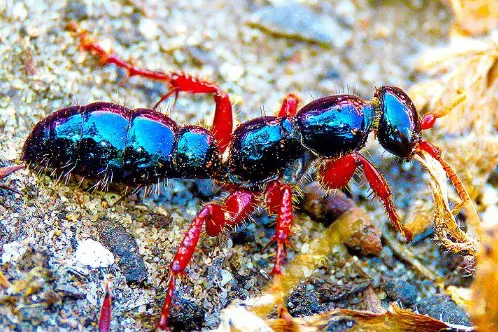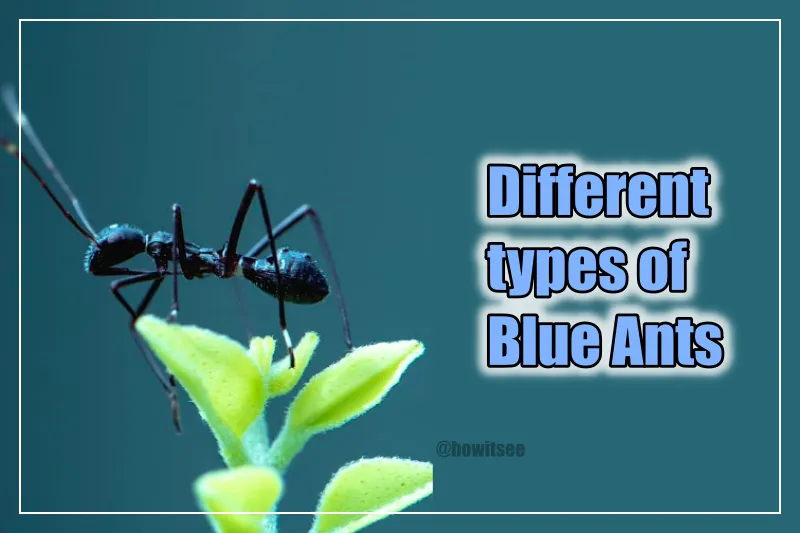When you hear the word “ants,” what do you think of? Perhaps a small, black or red insect? But ants are more than that. Have you heard of blue ants? These creatures are famous for their distinctive blue color and amazing traits.
In this article, we will talk about these fascinating ants and their appearance. So let’s begin.
Different types of Blue Ants
1. Bluebottle ant (Diamma bicolor)

They are called “blue bottle” because of their remarkable metallic blue-green color, as the name indicates. This southeast Australian native wasp species is not an ant but a large, solitary, and parasitic wasp. It is easy to distinguish females from males.
The creature has a metallic blue-green body with red wings. Females have a body size of 25 mm without wings, while males have wings with a body size of 15 mm. People can see them haunting mole crickets.
2. Blue Polyrhachis ant (Polyrhachis cyaniventris)
The blue Polyrhachis ant has a wide distribution in the Philippines, Indonesia, and Malaysia. People have found these mysterious ants in Mt. Banahaw, a mountain range in the Philippines, and they are said to have supernatural powers.
These ants are uncommon because of their blue color with a metallic sheen. Researchers need to solve the mysteries surrounding these legendary blue ants.
3. Paradise velvet ant (Ephutomorpha paradisiaca)
The paradise velvet ant is a tropical rainforest-dwelling species found commonly in Australia, South America, and Africa. These ants are brightly blue in color with striking orange antennae.
It is one of the largest ants and can attain a size of up to 2.5 cm, which is quite huge. South America has started a campaign to conserve this species of ant; they are reintroducing ants in national parks.
A study published in the journal PLOS shows that these ants contain very harmful venom, which is neurotoxic in nature.
4. Blue Meat Ants (Iridomyrmex lividus)
This Australian endemic species, closely related to Iridomyrmex purpureus, is smaller in size with the worker reaching 8 to 10 mm. These ants, which are monomorphic and have a black color with a blue abdomen, occur in groups of 1000 individuals and are not solitary like bluebottle ants.
They produce a lot of chemicals to communicate defense and attract mates. The Australian government has initiated a program to protect these ants by reducing the use of pesticides.
5. Green-head Ant (Rhytidoponera metallica)
Rhytidoponera metallica, also known as the “Green Head Ant,” displays an impressive coloration. However, it has dangerous and venomous stings, so you should not mess with this little creature found in Australia.
Its body has a brownish torso with a purple-green sheen, and it has an average size of 5-7 mm. Unlike other ants, workers of this species are capable of reproducing without queens.
They display mutualism with aphids, protecting them from predators, and in return, aphids feed ants with a sweet liquid called honeydew.
Blue Ants With Very Less Info
- Polyrhachis baca
- Echinopla cf. striata
- Echinopla densistriata
In conclusion, blue ants have many distinctive characteristics and are an important part of ecosystems. They are known for their impressive appearance and can also be harmful, so be careful if you ever encounter these beautiful blue creatures.
Also Read:

Being a zoology student I’m always been fascinated toward animals especially insects. I love to do research and learn about different animals. As a writer I want to share my thoughts about nature through my articles. Apart from this you can find me exploring the new places and voice notes.
